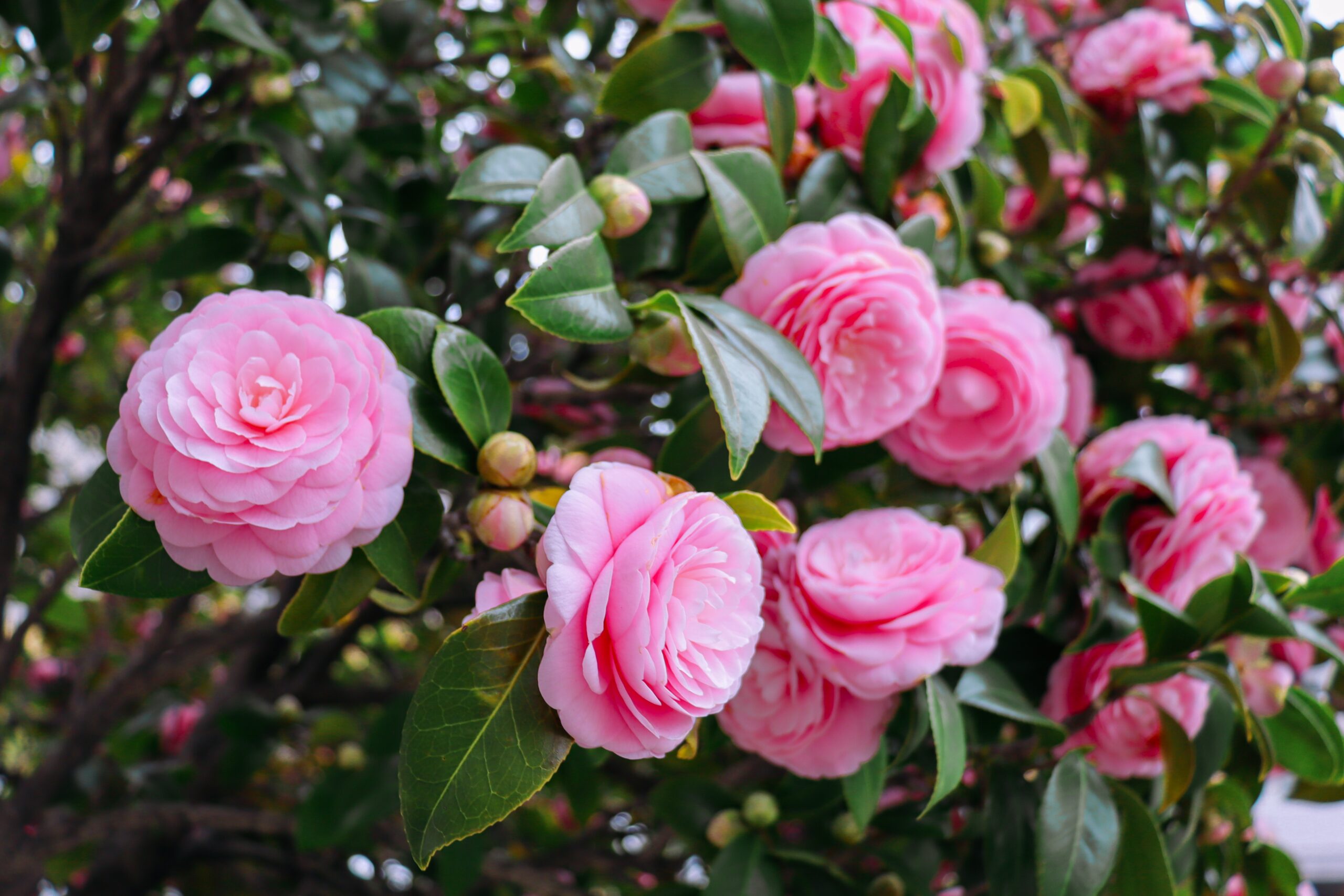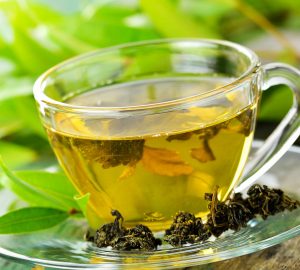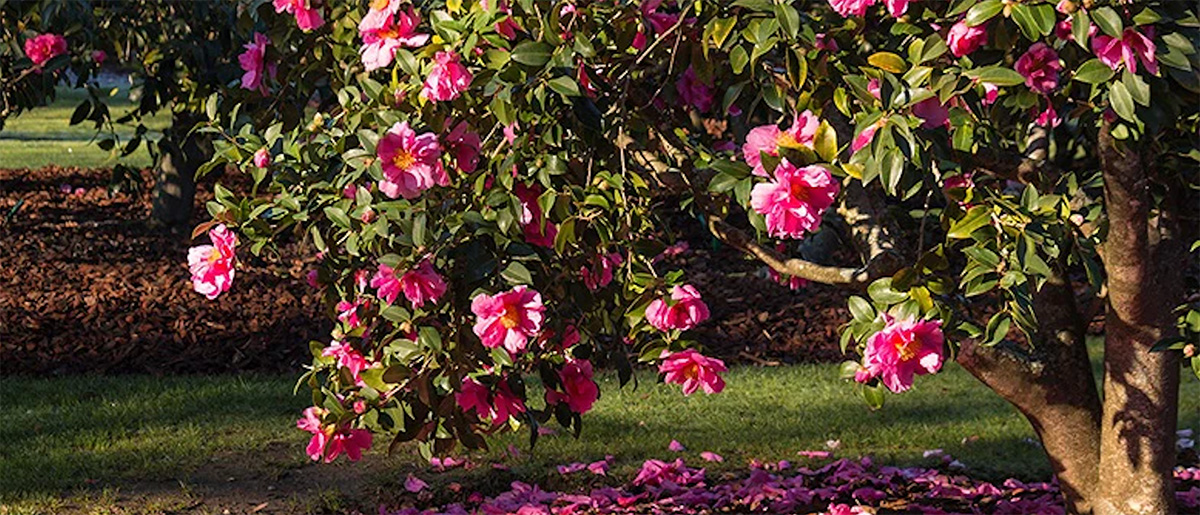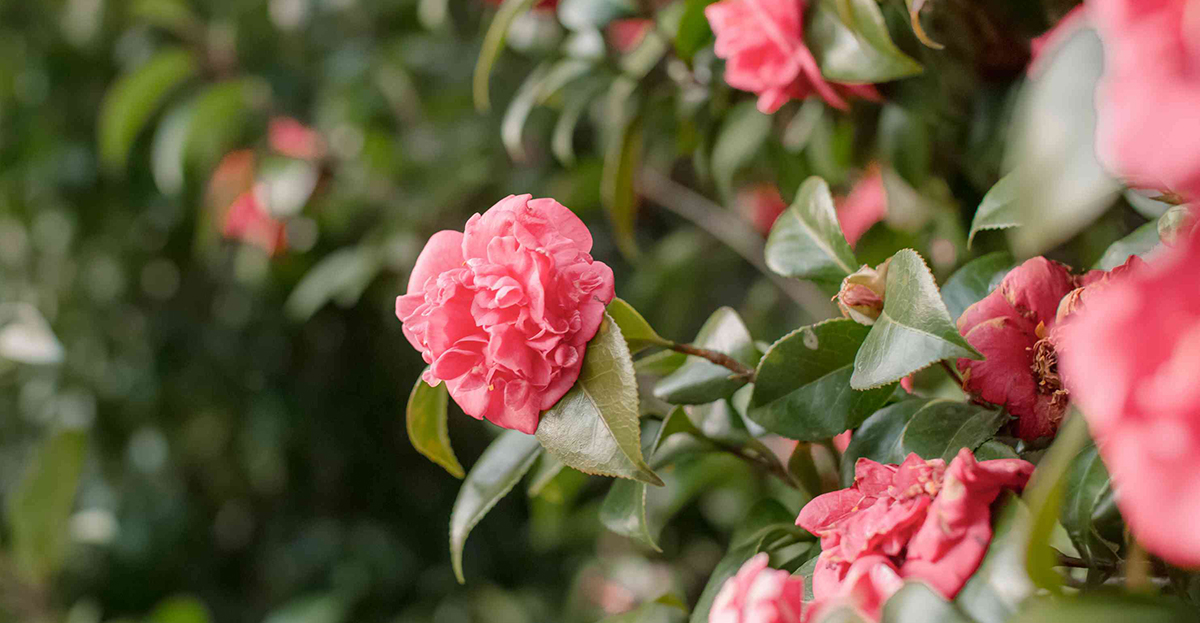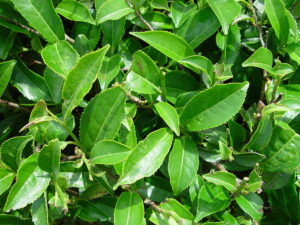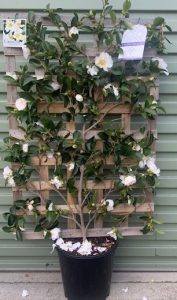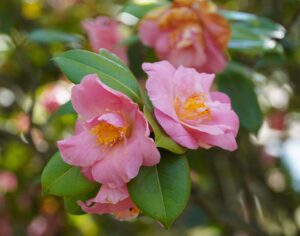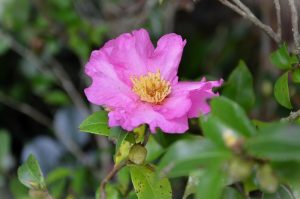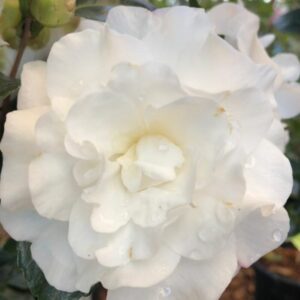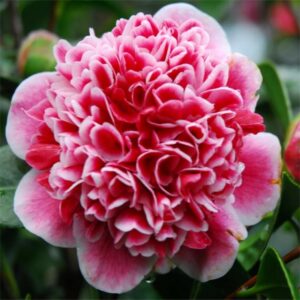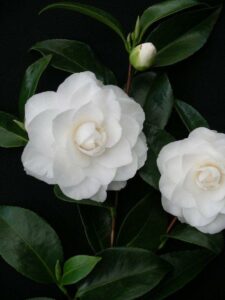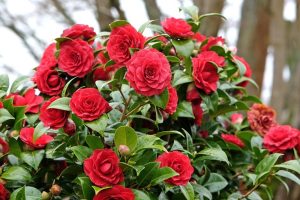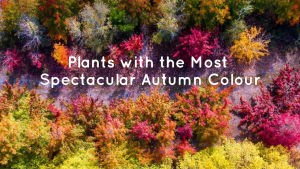Here are the DIFFERENT TYPES OF CAMELLIAS that we’ve picked out for you, some of our favourites. Jump straight to them from here if you wish:
The Benefits of Camellias
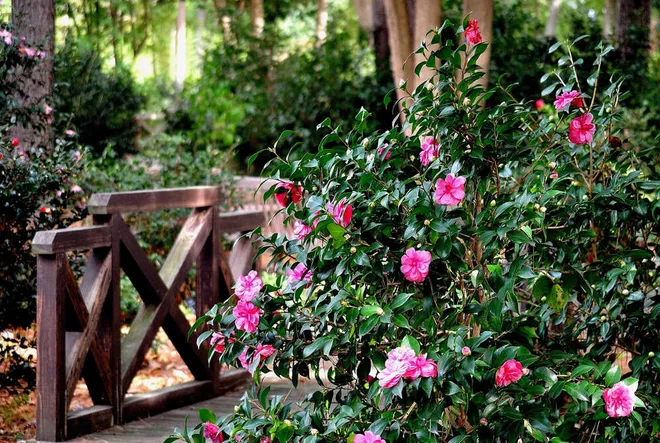 So why should you want to plant a Camellia at all?
So why should you want to plant a Camellia at all?
First up, they are so easy to grow. For very little effort you are getting this gorgeous, lush, flowering plant.
Next, they are very long living. Unlike perennials, they’re not going to be a sudden flash of beauty that dies quickly thereafter. You will get year after year of wonderful blossoms.
Finally, which is the whole point of this article, is the fact that they are so versatile.
The Different Applications of Camellias
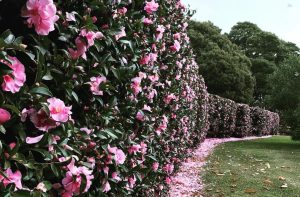 From the apartment balcony to the deep shade of suburban backyards, Camellias are kind of like that one size fits all leggings – but in this case it’s actually true.
From the apartment balcony to the deep shade of suburban backyards, Camellias are kind of like that one size fits all leggings – but in this case it’s actually true.
HEDGES & BORDERS
First of all, Camellias are very popular for hedges and borders. We’ve seen hedges that are over a hundred metres long, and a couple of metres tall. Simply spectacular.
POT PLANTS
 The next use is as a pot plant. A lot of us live in apartments nowadays, which can make you feel like you don’t get to share in the joy of having your own garden. But just because you don’t have a backyard, doesn’t mean you can’t have an exciting, lush garden.
The next use is as a pot plant. A lot of us live in apartments nowadays, which can make you feel like you don’t get to share in the joy of having your own garden. But just because you don’t have a backyard, doesn’t mean you can’t have an exciting, lush garden.
Pots let you put your plants wherever you want, free of the constrictions of soil. We actually stock our own range of pots, so you can easily get everything you need in one place. But what’s fantastic about Camellias is how well they grow in a pot.
So get creative with where you put them – whether it is that apartment balcony or just the patio. You can trim and shape them in this pot to however you like. Make sure you fertilize and water them to keep your Camellias lush and green.
SPECIMEN IN THE GARDEN
 Next thing is growing them as a specimen in the garden. Depending on what variety you choose, you can grow them in the shade with other shade lover plants like Helleborus or Azaleas. Or you can put them in the hot sun with other sun loving plants like Daises or Lavender.
Next thing is growing them as a specimen in the garden. Depending on what variety you choose, you can grow them in the shade with other shade lover plants like Helleborus or Azaleas. Or you can put them in the hot sun with other sun loving plants like Daises or Lavender.
If you are lucky enough to have your own backyard, you might come up against a different problem – the absence of sun. This can come from your neighbour’s house, it could be from other big trees in your yard, whatever the case, shade can be a limiting factor to what plants you use. But certain types of Camellias thrive in the shade, giving you colour and lushness where you most need it.
 STANDARD (BALL ON STICK)
STANDARD (BALL ON STICK)
Then you can have them as a standard, which is a ball on a stick style plant. You’ll find that most standards don’t flower, but a Camellia standard will give you gorgeous blooms and evergreen foliage. The standard we sell uses a Camellia sasanqua ‘Yuletide’ which has stunning hot pink/red flowers and is a slow grower. You can plant a row of standards in your garden or have it in a pot with some flowers planted underneath.
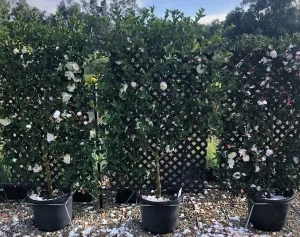 ESPALIER (USING TRELLIS)
ESPALIER (USING TRELLIS)
The next application is a bit trickier, but so worth the effort. Get some trellis and use Camellia as an espalier. The best type to plant for this is Sasanqua. Espalier Camellia is perfect for a tight situation up against the wall. For the whole year you will have lovely evergreen foliage and then in autumn and winter you get this gorgeous show of flowers.
The last application is even more unusual, but perfect for those who are wanting to do something a bit more different in their gardens. If you are intentional with the trimming, you can shape your Camellia like it was a sculpture, and have it as an exquisite centrepiece in the garden.
One of Chris’ first jobs was to do just this, here is a story from him:
“When I was seven, I went and got myself a gardening job and I used to work every Saturday morning for an elderly lady. Anything that was a bit tricky like climbing the ladder or lifting heavy things, I used to do for her. She planted a sasanqua Camellia that was cut into a perfect cylinder shape with a flat top. I was the one trimming it. It would take me hours, she would direct each snip and I would trim it little by little. But it was a beautiful thing.”
You’re practically spoilt for choice when it comes to deciding how to plant a Camellia in your garden.
The Different Types of Camellias
There are MANY sorts of Camellias, each with their own unique characteristics and strengths.
We bet you’re dying to hear more about that tea producing Camellia, so let’s jump straight into that one first.
These are grown all over the world for tea plantation, from Australia, to China, to India. The flowers themselves smell like green tea, but really, it’s the new growth you’re looking at to make that delicious cup of tea. Also yes, you can make green OR black tea, from the same plant. It’s all in the way you harvest the leaves that make the difference.
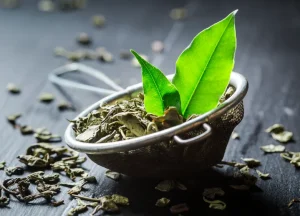 You have to wait until summer for the new shoots, pick a few grams and dry it in the microwave or oven. Then chuck on the kettle and make yourself a cuppa. This is going to be like no tea you’ve ever had before, that old stuff at the grocery store can’t measure up to freshly plucked and brewed tea.
You have to wait until summer for the new shoots, pick a few grams and dry it in the microwave or oven. Then chuck on the kettle and make yourself a cuppa. This is going to be like no tea you’ve ever had before, that old stuff at the grocery store can’t measure up to freshly plucked and brewed tea.
But of course, the Cammellia Sinensis is so much more than just a tea producer, it’s also a very attractive feature in the garden. You can plant them in a pot, have them as a specimen in the garden, or create a hedge out of them. The flowers are gorgeous, delicate white petals with a golden/yellow centre.
We get it, not everyone is a tea fanatic, so here is a Camellia that is purely for show. It’s actually our most popular Camellia in the nursery.
Sasanqua Camellias have smaller flowers and finer leaves than most Camellias. But they also have greater versatility in that they can grow in hot full sun, but also deep shade.
 As we mentioned before, a lot of gardens have those spots where the sun never quite reaches, and it can be tricky to find a plant that will work there. But you’re also not limited to the shade, if you have a big kitchen window or an ugly fence you want to cover and it’s in full sun, this is no problem for the Camellia sasanqua. Just make sure you’re watering it more if it is in a sunny spot.
As we mentioned before, a lot of gardens have those spots where the sun never quite reaches, and it can be tricky to find a plant that will work there. But you’re also not limited to the shade, if you have a big kitchen window or an ugly fence you want to cover and it’s in full sun, this is no problem for the Camellia sasanqua. Just make sure you’re watering it more if it is in a sunny spot.
Beyond this, they are also nifty in a tight area because they don’t need a lot of root space as long as you use really good soil. They’ll grow up and then with a bit of a trim you can keep them nice and narrow.
You can grow them under verandas or pergolas, or they make beautiful pot plants. They flower from autumn to mid-winter.
THERE ARE A LOT OF DIFFERENT COLOUR CHOICES, SO THESE ARE SOME OF OUR FAVOURITES:
Setsugekka is great for hedging and has beautiful dark green foliage with lots of white flowers. They are the perfect option for a green and white garden style.
-
-
Camellia sasanqua ‘Setsugekka’ 6″ Pot
0 out of 5 0$25.99Original price was: $25.99.$22.99Current price is: $22.99. -
Camellia sasanqua ‘Setsugekka’ 8″ Pot
0 out of 5 0$49.99Original price was: $49.99.$39.99Current price is: $39.99. -
-
Camellia sasanqua ‘Setsugekka’ (Espaliered) 10″ Pot
0 out of 5 0$219.99Original price was: $219.99.$210.00Current price is: $210.00.
Pure Silk have gorgeous white flowers with hints of pink in the petals and fresh buds. People are drawn to Pure Silk because of the lack of a big yellow centre that most other Camellias have.
-
-
-
Camellia sasanqua ‘Pure Silk’ 8″ Pot
0 out of 5 0$39.99Original price was: $39.99.$29.99Current price is: $29.99. -
-
Shell Pink is a very strong and rapid grower with massive pink flowers. They are perfect as a dense hedge or specimen in the garden.
-
Camellia sasanqua ‘Shell Pink’ 8″ Pot
0 out of 5 0$39.99Original price was: $39.99.$29.99Current price is: $29.99. -
-
Camellia sasanqua ‘Shell Pink’ 10″ Pot
0 out of 5 0$79.99Original price was: $79.99.$59.99Current price is: $59.99. -
Camellia sasanqua ‘Shell Pink’ 12″ Pot
0 out of 5 0$139.99Original price was: $139.99.$89.99Current price is: $89.99.
Hiryu has vivid pink-purple flowers and is the strongest grower of all the Camellias. It’s great as a hedge and an excellent option for those who are wanting a brighter pop of colour.
-
-
Camellia sasanqua ‘Hiryu’ 6″ Pot
0 out of 5 0$25.99Original price was: $25.99.$19.99Current price is: $19.99. -
-
-
-
-
Camellia sasanqua ‘Hiryu’ 16″ Pot
0 out of 5 0$229.99Original price was: $229.99.$189.99Current price is: $189.99. -
-
Avalanche is a new type on the market that is very handy for lots of people. It is a dense and bushy column that is quite tall and skinny. You can have it as an individual specimen or plant it as a hedge.
Japonica has a wider leaf and tend to grow bushier and fatter than the Sasanqua. They grow quite tall and will live for many, many years. But keep them out of the hot afternoon sun or you’ll get brown patches in the middle of the leaves.
They flower from late winter into spring, so will have blossoms at different times than the Sasanqua. If you plant both species then you can have flowers for five or six months of the year.
JAPONICA ALSO COMES IN DIFFERENT COLOURS, HERE ARE SOME OF OUR FAVOURITE PICKS:
Volunteer has the most amazing flowers, it is an eruption of red-pink flowers into white tips. It is the only Japonica that flourishes in the hot sun (provided there is adequate watering), as well as the deep shade. Volunteer is a good strong grower, nice and bushy, and what’s interesting is that the flowers become richer in colour the more you progress through the season.
Pope John XXIII is a classic white with semi-formal double flowers and really nice foliage. They are another great selection for that green and white garden style.
Black Tie is a more formal double flower in a brilliant shade of red with large leaves. It’s another strong grower that is going to form a dense rounded shape.
 Okay so you’ve decided what type and where you’re going to use it, now you need to know how to take care of it.
Okay so you’ve decided what type and where you’re going to use it, now you need to know how to take care of it.
Camellias like loose well-drained soil that is acidic. If you don’t have quite the right soil, then dig a big hole and mix in some fine composted pine bark or acidic potting mix. They love lots and lots of fertiliser.
If you’re Camellia is looking a bit crook, what’s likely happened is that you’ve started taking your old Camellia for granted and not watered it enough. So make sure you give it plenty of water. Another solution is to mulch it with fine pine bark or Osmocote. If it was really crook, try the Osmocote liquid fertiliser for acid loving plants, this will almost bring it back from the dead.
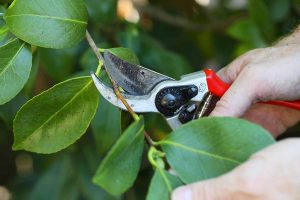 In general, your Camellia needs regular feeding – water it and give it Osmocote, and Camellias will absolutely flourish. The best time to prune is immediately after the flowering is finished. The reason for this is that pruning them halfway through the season inhibits next year’s growths.
In general, your Camellia needs regular feeding – water it and give it Osmocote, and Camellias will absolutely flourish. The best time to prune is immediately after the flowering is finished. The reason for this is that pruning them halfway through the season inhibits next year’s growths.
Although Camellias flower in winter, you won’t get much foliage growth. But being evergreen means that you will still have gorgeous green leaves all year.
 Camellias are a stunning plant with so many applications, from a thick hedge to a pot plant, you have so much freedom with where you want to put it in your garden.
Camellias are a stunning plant with so many applications, from a thick hedge to a pot plant, you have so much freedom with where you want to put it in your garden.
There is a huge range of colour choices so you can go bold or stay subtle.
And if you love tea as much as we do, then chances are you’re gunning for the Camellia sinensis ‘Tea Plant’.
So pour yourself a cuppa and get to thinking about how you want to harness the versatility of Camellias.



